
Upcoming Book Preview: The following story of a heroic Great Dane who saved his master and two other men during a fire and gas leak at 57 West 57th Street is one of almost 100 stories that will be featured in my upcoming book, The Bravest Animals of Gotham: Tales of FDNY Mascots of Old New York (2023). Jim was not a member of the FDNY, but he was a civilian first responder (or should I say fur-st responder?) who deserves an honorary mention in the book and on this site.
Jim was a massive Great Dane with a magnificent sense of smell. So, when the three-year-old dog detected a bad odor in his master’s home at 57 West 57th Street on the morning of October 21, 1913, he knew something did not smell right.
In fact, a vacuum cleaner in the basement of Dr. Harry Tower Galpin’s apartment hotel had exploded, blowing the caps off twenty-two gas meters that were above it. The gas flooded the rooms where Dr. Galpin, his brother, and a family friend were asleep.
Jim ran to his master’s bedroom and barked several times, but Dr. Galpin was already overcome by the fumes. The large dog then began biting Dr. Galpin.
According to the press, the Great Dane left 106 tooth marks on Dr. Galpin’s body before the druggist was sufficiently aroused to make it to a window and then save his guests.
Dr. Galpin, who not only owned the building and rented studios and apartments, but also ran a drug store on the ground floor, told reporters that he was thankful for every one of those bites.
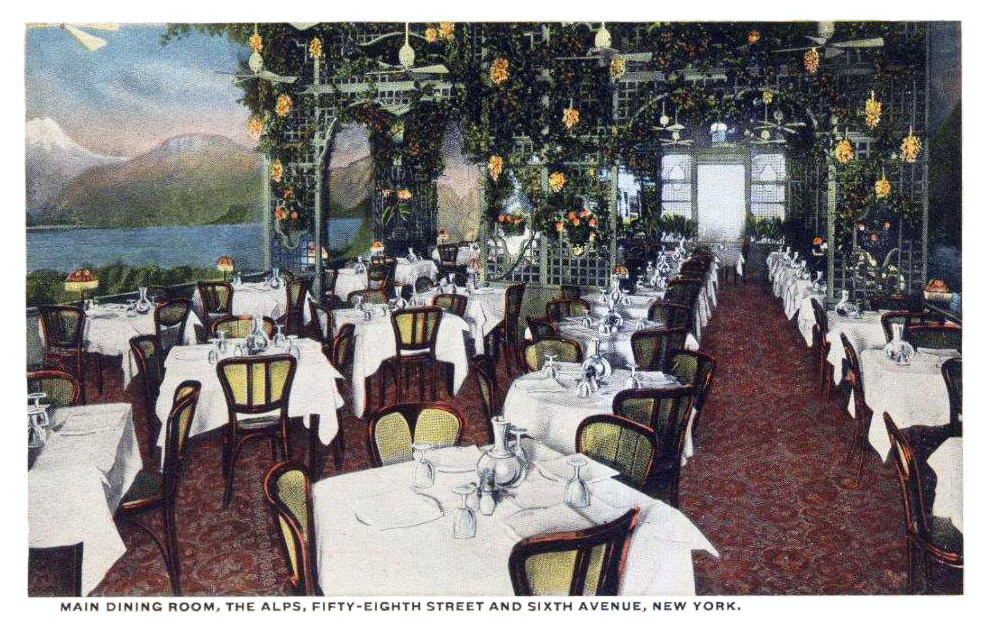
The story of Jim’s heroics made the news across the United States and Canada, setting off a series of honorary engagements for Jim and his master. With every article published, Jim’s fame spread, as artists, writers, Canadian sportsmen, and members of New York City’s high society went out of their way to meet the Great Dane.
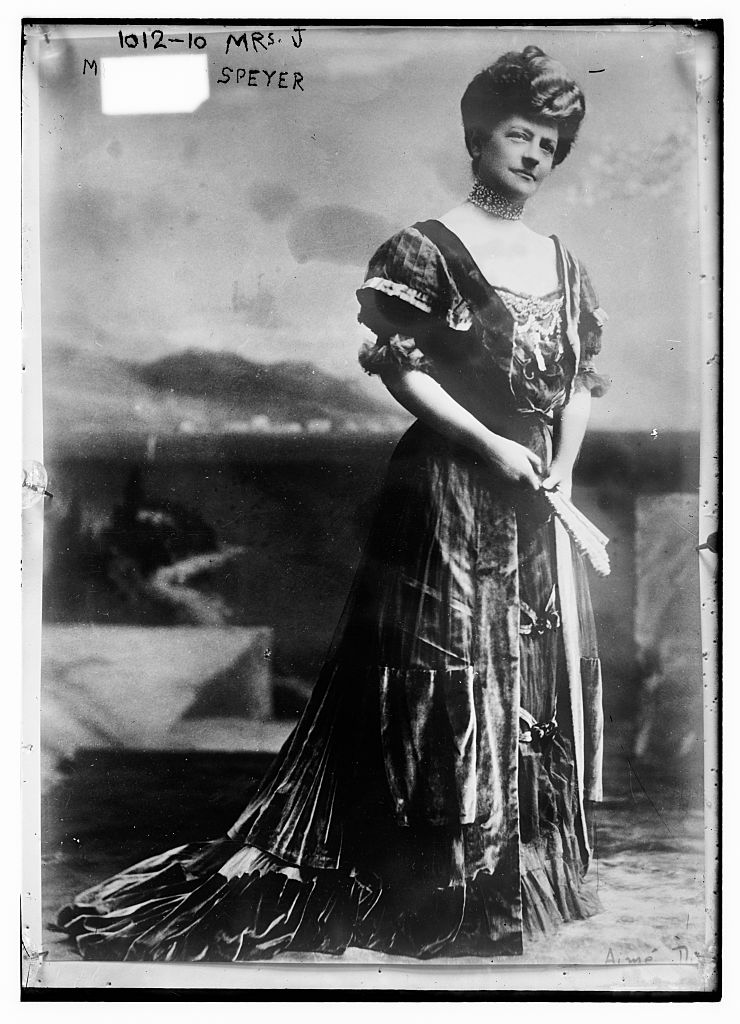
In February 1914, Mrs. Ellin Leslie Prince Lowery Speyer, president of the New York Woman’s League for Animals, invited Jim to her home at 1058 Fifth Avenue. The 127-pound dog was especially groomed for the occasion, and his brindle coat reportedly shone.
About one hundred officers and guests of the league allowed the Great Dane “to rub nose against their costly furs” and shake their hands with his black paws.
That same month, Miss Katie Sanborn invited Jim to her home for afternoon tea with several other high-society ladies. The women discovered that Jim was “an inveterate tea drinker” who also enjoyed joining Dr. Galpin in a “quiet smoke.” (According to a photograph published in the Ottawa Daily Republic, Jim partook in a smoke from a hookah pipe at the tea party.)
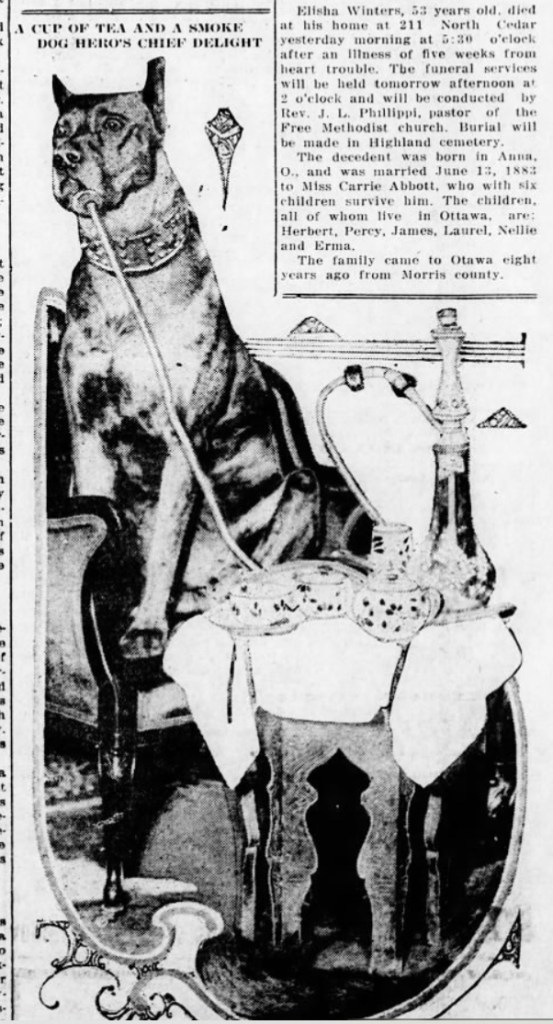
Multiple newspapers reported the following about Jim: “The average man looks upon a tea with horror. It is a thing to be avoided at any cost. There is one member of the masculine sex in this city, however, who not only attends these festivities, but can honestly and truthfully say that he enjoys them.”
The grand honor for Jim came on Memorial Day in 1914, when the Great Dane and three other dogs received lifesaving awards at Manhattan’s eighth annual Workhorse Parade, sponsored by the New York Women’s League for Animals.
The other canine honorees included Trixie, a Japanese spaniel belonging to James Harcourt of Brooklyn, who woke up the family when a fire broke out in the family’s house in 1910; Bum, the Twelfth Precinct mascot dog who helped save the life of a child whose clothes had caught fire during a bonfire; and Olaf Hansen’s Newfoundland, Teddy, who saved two people from drowning in the Hudson River in 1909.
In the fall of 1914, Jim took a trip to Saratoga Springs with Dr. Galpin. Having lost his wife, Nina Florence, only three years earlier, the druggist traveled everywhere with his Great Dane—Jim even had his own special seat in the rear of the vehicle.
During this trip, Jim’s hip was injured after he was struck by another vehicle while playing outdoors. Two veterinarians were able to treat most of his injuries but they could not repair his crippled hip.
A few weeks later, Dr. Galpin noticed that Jim had gnawed two holes into the hip, allowing the affected area to drain. Within two days, the wounds had healed, and he was walking almost as good as new.
“He did what the vets couldn’t or didn’t do, and just how he knew how to do it is more than I can tell you,” Galpin told the press. “Medical degrees are not conferred upon canines, but if they were, my dog Jim ought to have one, summa cum laude.”
Jim the Great Dane Is Murdered
Jim’s life came to an abrupt and violent end during a robbery on July 14, 1919.

According to the New York Times, Dr. Galpin had closed his business on Monday night and sent Jim to his sleeping quarters in the basement, which he shared with an unnamed drugstore cat. At about 5:00 a.m. the next morning, the Great Dane ran into his master’s room and pressed he cold nose against his hand. Then he ran into the store as the druggist scrambled to get out of bed.
Before Dr. Galpin could reach the store, he heard a loud commotion, followed by Jim’s yelps. A quick examination showed that robbers had stolen money and stamps from the cash drawer; they had also attempted to break open a safe. Based on a trail of blood, Jim must have attacked the thieves while they were trying to get into the safe.
The culprits escaped, but not before they struck Jim with a heavy weapon, possibly a blackjack. Jim succumbed to his injuries, including broken ribs and a pierced abdominal wall.
Ten years later, Dr. Galpin died suddenly of heart disease at the age of fifty-nine. He was survived by his new wife, Selma, and two sons, Harry T. Jr. and Allen Ross.
A Brief History of West 57th Street
The story of Jim the Great Dane took place in a building on the northeast corner of West 57th Street and Sixth Avenue, on land once owned by Rachel Cosine. Back then, this neighborhood was called Bloomingdale, which comprised numerous farms and homesteads along the old Bloomingdale Road (Broadway). Bloomingdale Square, the rural town center, was located between 55th and 57th Streets and Eighth and Ninth Avenues.

The earliest records of this area go back to Sir Richard Nicolls, the first English governor of New York, who issued a patent for lands along the Hudson River above present-day 42nd Street to Johannes Van Brugh, Thomas Hall, John Vigne, Egbert Wouters, and Jacob Leanders. This property eventually came into the hands of Cornelius Cosine and henceforth was known as the Cosine Farm.
Born in New York sometime around 1718, Cornelius Cosine was the son of Jacobus Cosynszen and Aeltje Aumach Cosynszen. The Cosynszens (also referred to as the Anglicized name Cosine or Cozine) were early Dutch settlers who arrived in New Amsterdam around 1684.

Cornelius Cosine owned the family farm from present-day 53rd to 57th Streets between the North River (Hudson) and the “common lands” near Sixth Avenue. Following Cornelius’ death in 1786, the land was deeded to his two sons, Cornelius Jr. and Balm Johnson.
Balm Johnson and his wife, Catharina, had eight children, including daughters Rachel, Catherine, Sarah (Hopper), Hannah, and Jane (Ackerman), and sons John, Nicholas, and Cornelius. Rachel Cosine, who died in 1854, inherited the northern parcel of the farm along 57th Street., as shown in the map below.
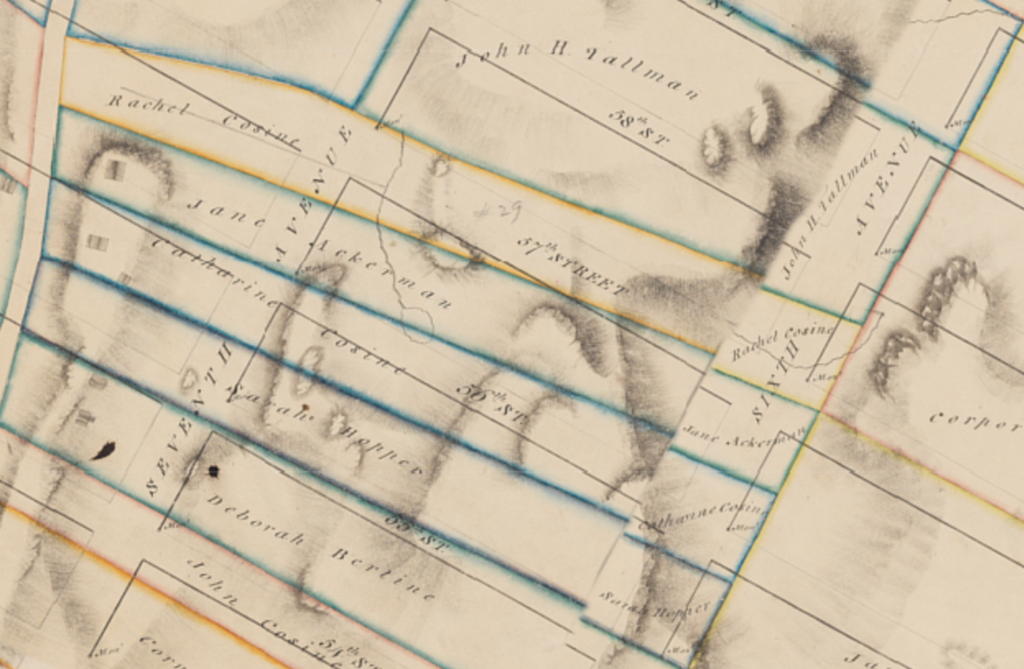
John Cosine inherited the land in 1809, but for years it was tied up in the courts with judgments and mortgages. In 1838, the farm was deeded to mortgage holder John Jacob Astor in a foreclosure sale. Astor, who paid only $23,000 for the farm, gave it to his daughter, Laura Astor Delano, six years later as her wedding gift.
From about 1845 through 1869, Broadway was laid out and widened. As this illustration below from 1868 shows, the land around Sixth Avenue and 57th Street was rocky and undeveloped, save for frame houses and shanties.
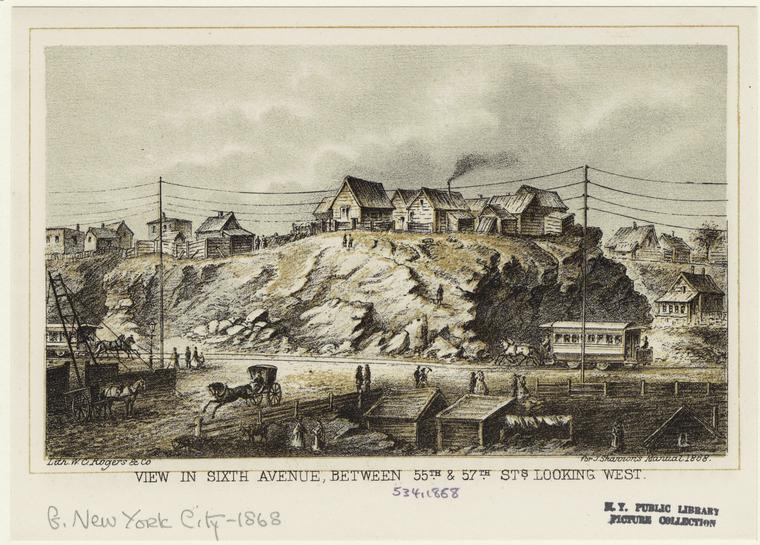
In 1902, the old Cosine farm came into possession of Laura’s eight nieces and nephews, (Lewis Stuyvesant Chanler and his siblings). About 20 years later, in 1925, the Fifty-Seventh Street Corporation acquired the plot at 57th Street and Sixth Avenue with plans to replace Dr. Galpin’s old drug store and apartment building with a modern building featuring four stores and an arcade.
The final result was not a retail center, but Alain E. White’s Medical Arts Building, also known as the Professional Centre Building. Designed by the architectural firm of Warren & Wetmore, the 18-story structure was specifically intended for physicians, dentists, druggists and other medical professionals (click here for a current floor plan of the building).
One of the doctors who moved into the new building was Dr. George E Browning, who opened the Medical Arts Sanitarium on the entire 14th floor in 1928 (the facility was sometimes called Dr. Browning’s Sanitarium). On the 17th and 18th floors were luxury penthouse apartments, and Charlie Brazelle operated a night club called Boeuf sur le Toit in the basement (the club would later become Dario’s La Martinique, where Danny Kaye made his New York debut.)
Today, the now 21-story building still has some medical offices, but the sanitarium is of course gone and the former penthouse apartments are home to an art gallery. Ironically, one of the businesses now located on the spot where a Great Dane saved a druggist is the Cornerstone Medical Arts Center, a drug and alcohol rehabilitation center.





What a story! By turns delightful and heartbreaking. Thank you for sharing it! Jim definitely deserves to be remembered!